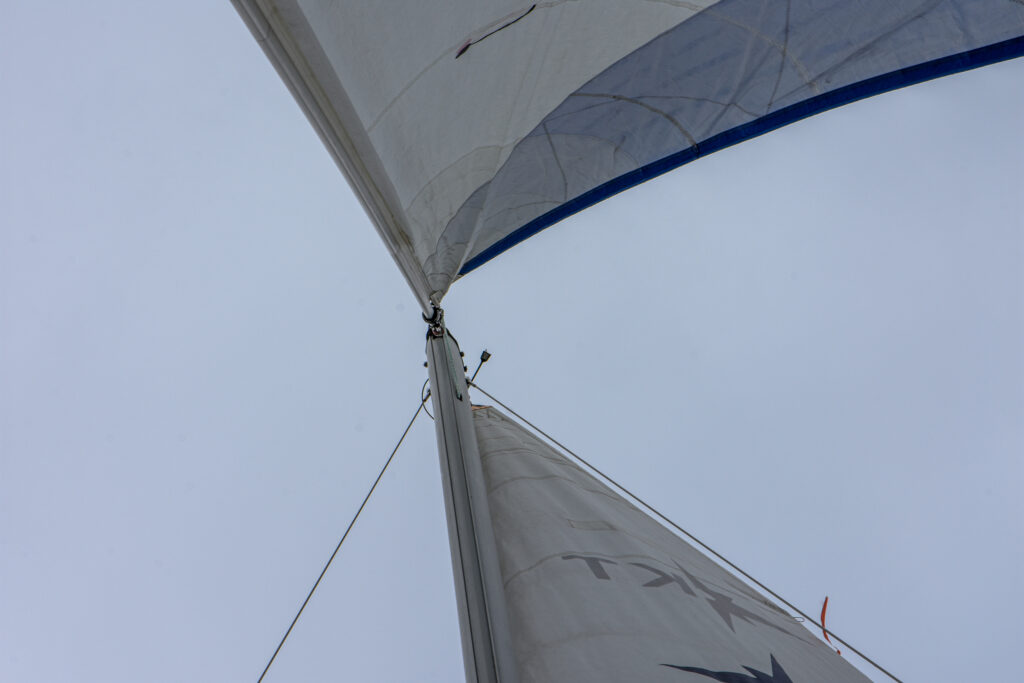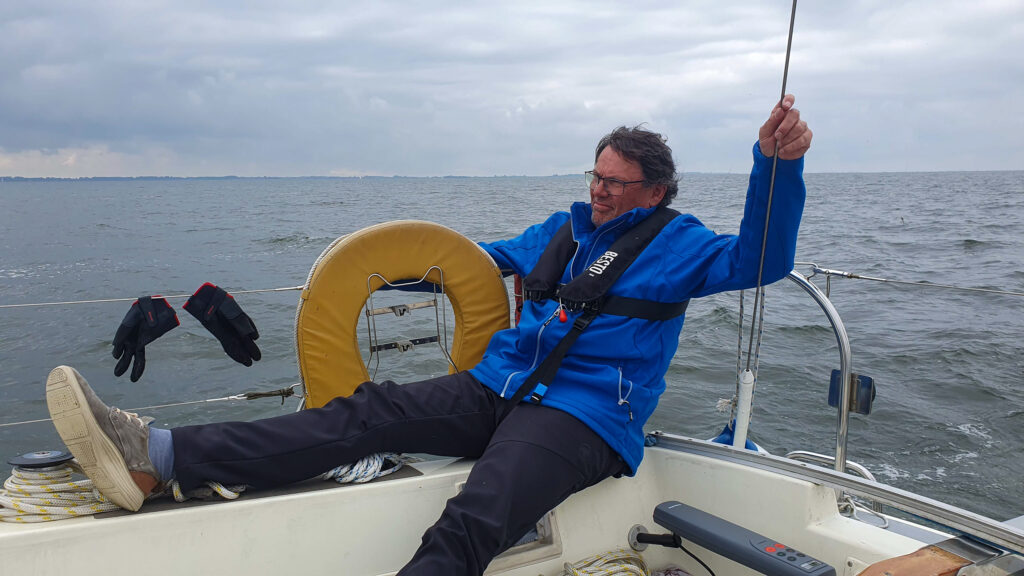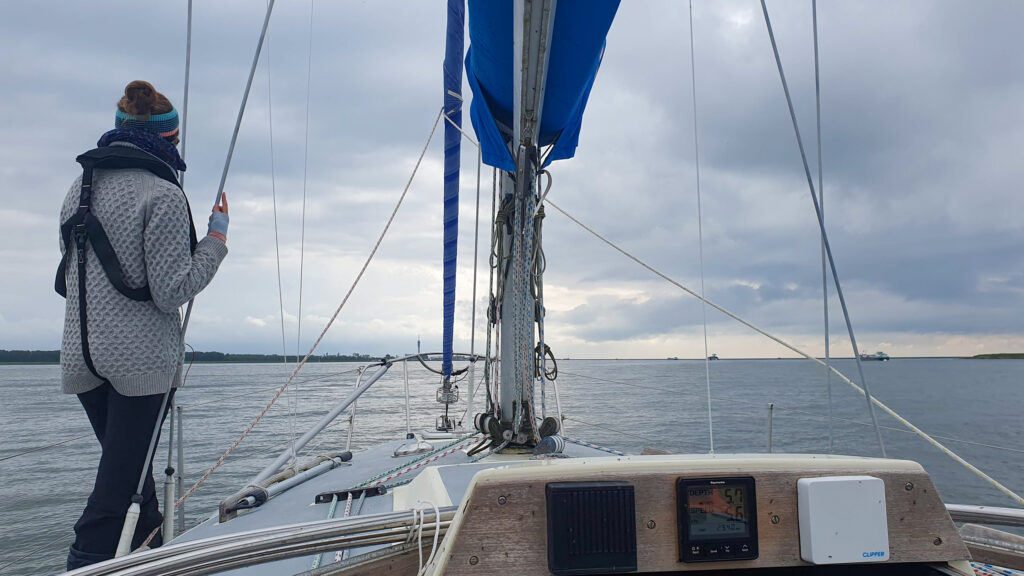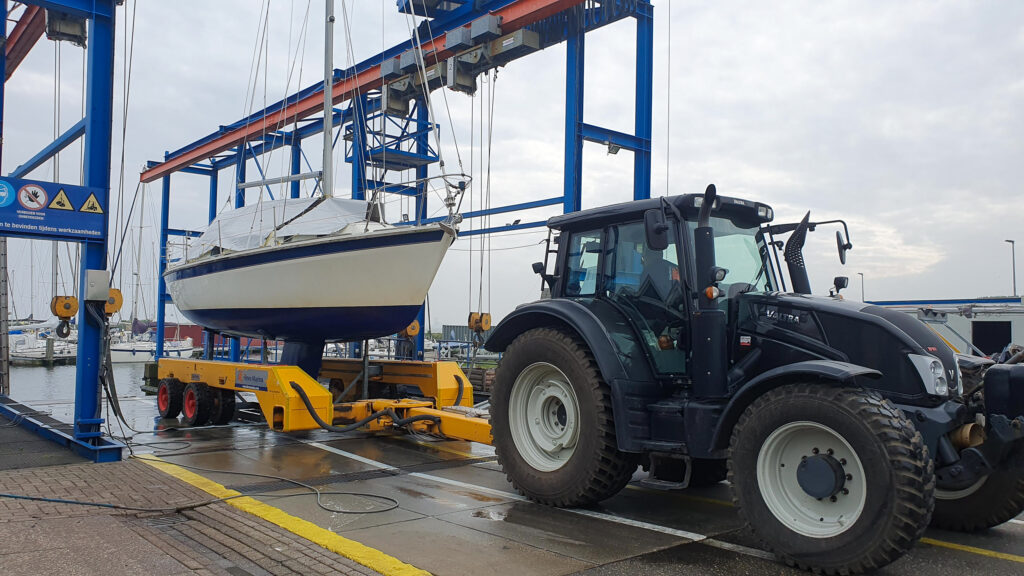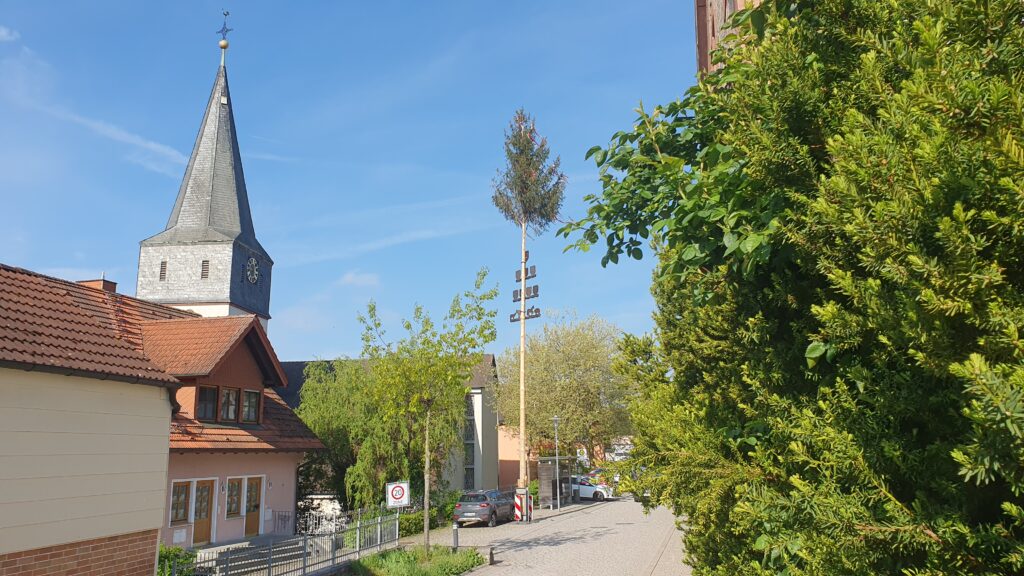IJsselmeer

Diagonale
Diagonal
Von Den Oever (buiten) nach Lelystad durchquert man das IJsselmeer an seiner größten Ausdehnung, von Nordwesten nach Südosten. Dabei sind einige Fahrwasser zu beachten und Untiefen zu meiden. Die gesamte Strecke beträgt dann ca. 32 Seemeilen. Wir brauchen dafür knapp siebeneinhalb Stunden, wobei wir fast die Hälfte der Zeit segeln können. Dann lässt der Wind nach und wir motoren nach Hause.
From Den Oever (buiten) to Lelystad, you cross the IJsselmeer at its greatest extent, from northwest to southeast. There are some fairways to be observed and shoals to be avoided. The total distance is about 32 nautical miles. It takes us just under seven and a half hours, and we can sail for almost half of that time. Then the wind drops and we motor home.
Dateigröße: ~256 MB, Dauer: 8:47
Filesize: ~256 MB, Duration: 8:47
Es ist ein trüber Tag, der Himmel ist völlig bedeckt, aber es ist warm und es regnet (fast) nicht. Am Nachmittag wird es etwas schwül und die bekannten Mückenschwärme treten wieder auf. Diese Mücken stechen nicht, sind aber trotzdem sehr lästig, vor allem weil sie in Massen auftreten. Segel, Deck, Kleidung – alles ist in kurzer Zeit von toten Mücken verschmutzt.
Der Wind kommt zunächst aus West mit ca. 3 Beaufort, später dreht er auf Nord-West und wird deutlich schwächer. Wegen unseres Genua-Baumes kommen wir trotzdem gut vorwärts. Weil wir am Abend schon einen Tisch bei unserem Stamm-Inder reserviert haben und die Ladies in den unsauberen Duschen des Waddenhavens nicht duschen wollten, müssen wir die Zeit, wann wir den Motor einschalten, genau kalkulieren. Wie weit können wir segeln, damit wir bei ca. 5,5 Knoten unter Motor noch zwischen fünf und halb sechs in der Flevo Marina ankommen?
It is a gloomy day, the sky is completely overcast, but it is warm and (almost) not raining. In the afternoon it gets a bit humid and the familiar swarms of mosquitoes appear again. These mosquitoes don’t bite, but they are still very annoying, especially because they appear en masse. Sails, deck, clothes – everything is soiled by dead mosquitoes in a short period of time.
The wind comes from the west at first with about 3 Beaufort, later it turns to north-west and becomes much weaker. Because of our whisker-pole, we still make good progress. Because we have already booked a table at our regular Indian in the evening and the ladies didn’t want to shower in the unclean showers of the Waddenhaven, we have to calculate exactly when to switch on the engine. How far can we sail so that we arrive at Flevo Marina between five and half past five at about 5.5 knots under engine?
Beim Setzen und Bergen des Vorsegels ist uns schon mehrmals aufgefallen, dass sich das Vorstag irgendwo unter der Mastspitze verheddert und damit die Drehung hemmt und manchmal sogar blockiert. Das neue Genua-Fall ist nicht mehr mit einem Augspleiß am Schäkel befestigt, sondern mit einem „Fallknoten“, das könnte die Ursache sein. Allerdings lässt sich das nicht ganz einfach verifizieren. Wir werden ein Auge darauf haben.
Nachdem es am Mittwochabend noch einmal regnet, haben wir am Donnerstag Glück. Es bleibt den ganzen Vormittag trocken und wir haben einen mäßigen Wind von vorne, sodass wir die Segel gut trocknen lassen und dann abschlagen und verstauen können. Es ist ein arbeitsreicher Tag und am Abend ist (fast) alles eingepackt und im Auto verstaut.
When setting and recovering the headsail, we have noticed several times that the forestay gets tangled somewhere under the masthead and thus inhibits the rotation and sometimes even blocks it. The new genoa halyard is no longer attached to the shackle with an eye splice, but with a „halyard knot“, which could be the cause. However, it is not very easy to verify this. We will keep an eye on it.
After it rains again on Wednesday evening, we are lucky on Thursday. It stays dry all morning, and we have a moderate wind from the front, so we can let the sails dry well and then take them down and stow them. It is a busy day and in the evening (almost) everything is packed and stowed in the car.
Wir übernachten noch eine Nacht im gewohnten Leonardo Hotel von Lelystad, nur Livia muss mit Baloo an Bord schlafen, weil das Hotel keine Hunde erlaubt. In der Früh verlässt uns Matthias Richtung Bahnhof und wir holen Livia in der Marina ab.
Wir befestigen noch die Persenning über dem Cockpit und verholen dann die pepperbird zum Kran. Die Prozedur ist schließlich fast eine Stunde verspätet abgeschlossen und wir können Richtung Arnhem zu unseren Freunden Judy, Peter und Bobby aufbrechen. Aber vorher brauchen wir noch ein Frühstück, das wir in einem Fast-Food-Restaurant in Harderwijk bekommen.
Leider können wir uns nur etwa zwei Stunden in Arnhem aufhalten, damit wir noch rechtzeitig vor Küchenschluss in unserem Quartier in der Nähe von Würzburg ankommen. Es geht sich gerade noch aus.
We spend another night in the usual Leonardo Hotel in Lelystad, only Livia has to sleep with Baloo on board because the hotel does not allow dogs. In the morning, Matthias leaves us for the station, and we pick up Livia at the marina.
We fix the tarpaulin over the cockpit and then move the pepperbird to the crane. The procedure is finally completed almost an hour late, and we can leave for Arnhem to meet our friends Judy, Peter and Bobby. But before that we need breakfast, which we get in a fast food restaurant in Harderwijk.
Unfortunately, we can only spend about two hours in Arnhem so that we arrive at our accommodation near Würzburg in time before the kitchen closes. It just about works out.


